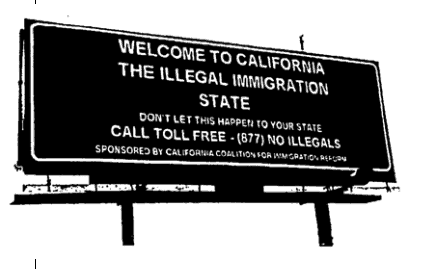O Tempora, O Mores! (August, 1998)
American Renaissance, August 1998
Pauline Hanson and her One Nation Party are going from strength to strength. In elections for the parliament of the Australian state of Queensland, her party won 23 percent of the vote, took 11 of 89 seats, and helped knock the ruling Liberals out of a majority. One Nation is also likely to have a strong showing in national elections, which must be held by May of next year. The party, which is only 18 months old, has no chance of forming a government, but it could easily hold the balance of power in the Australian Senate, which is divided between the Liberal and Labor parties.

After the success in Queensland, Miss Hanson gave details about the immigration program she proposes. She wants zero net immigration, that is, newcomers should no more than make up for Australians who leave the country. She also wants safeguards to preserve the current ethnic balance, which is overwhelmingly white. She would also change Australia’s refugee policy, which automatically grants permanent residency rights; she would send refugees home after five years, or as soon as the troubles they were fleeing have been resolved.
Miss Hanson continues to provoke the sharpest possible criticism. Though she has promised to expel “racists and extremists” from her party, she has not retreated from her position that Australia must preserve its unique people and culture, and should never permit itself to be swamped by Asians.
One Nation Party’s extraordinary success in its first electoral test has impressed many politicians. Miss Hanson says that Labor and Liberal legislators at both state and federal levels have approached her asking to join the party. She says she will not admit just any politico who wants to keep his job, and will not compromise her party’s principles. (Nathan Vass, Australia Must Regain Work Ethic: Hanson, Northern Territory News, June 21, 1998. Michael Millet, Pauline Hanson: My Right Australia Policy, Sydney Morning Herald, July 2, 1998.)
In March, a bill (HR-856) that could make Puerto Rico our 51st state passed in the House of Representatives by one vote, 209-208. Anti-statehood lobbying by English First and the Council of Conservative Citizens, among others, just failed to kill the measure. The bill could come up in the Senate as early as July.
Jim Boulet of English First notes that the GOP is cozying up to the pro-statehood lobby again. On June 10th, Republican leaders met with members of Puerto Rico’s House of Delegates to discuss statehood, and on July 1st, Newt Gingrich gave a speech to the pro-statehood League of United Latin American Citizens (LULAC) at their convention in Dallas, Texas.
As we did with the House vote, AR will fight the bill. We will give a copy of the March AR article opposing statehood to every Senator. English First has started a postcard campaign against the bill, details of which are available at www.englishfirst.org or by writing to English First, 8001 Forbes Place, Suite 102, Springfield, VA 22151.
Meanwhile, Puerto Rico is having a temper tantrum about its future status. Telephone workers have gone on strike and destroyed more than $2 million in company equipment in an attempt to stop the government from selling the state telephone company to the American company GTE. Hundreds of thousands of customers are without service. Puerto Rico’s governor Pedro Rossello, who approved the sale, favors statehood while labor leaders want independence. The strikers say he is “selling the national patrimony” as part of a plan to promote statehood. On placards and leaflets strikers replace the double S in Mr. Rossello’s name with a swastika.
Over the Independence Day weekend, public sector trade unions were preparing to join in what would be a two-day general strike, beginning July 7. They claimed they would cut off water, electricity, and telephone service and bring the island to a halt. Economists estimate that Puerto Rico has already lost over $100,000,000 because of the telephone strike, a figure that would multiply rapidly if there were a general strike. (Michelle Faul, Puerto Rico Erupts Over Labor Spat, AP, June 28, 1998. More Strikes Planned in Puerto Rico, AP, June 30, 1998.)
Road to Nowhere
President Clinton’s race panel has held its last scheduled public meeting and has served up preliminary proposals. First of all, the seven-member panel congratulated itself on its achievements and recommends that its work continue past the original one-year term. It proposes a standing commission, council, or permanent advisory board to the President.
In order to foster racial harmony, the panel would like to raise the minimum wage, so non-whites will earn more money. It also wants to improve public schools, on the assumption that ignorance causes “racism.” According to panel member Thomas Kean, former Republican governor of New Jersey, the country needs a massive investment in new schools, teacher training, and “access to technology.” “I’m suggesting a totally federal initiative [that] states should be required to match,” he says. Congress may balk at spending more money, but it must make the effort “if a 300-year problem is going to be brought under control.”
The Asian panel-member, Angela Oh, sees a need to calm nativist fears of too much immigration. She says Americans will stop worrying about the millions of immigrants who do not speak English if the government pays for natives to learn foreign languages. Finally, all panel-members agree that the media are a terrible obstacle to racial harmony, and must stop their unflattering portrayals of non-whites.
President Clinton will prepare his own year-end report on race relations and what to do about them. The panel’s idiotic recommendations will be the basis for his report. (Sonya Ross, Race Panel Urges Better Education, AP, June 19, 1998.)
Who’s the Hero?
On May 7, Barbara Coe and the California Coalition of Immigration Reform (CCIR) put up a billboard at the California/Arizona border (see below). The group got a lot of hate calls and death threats, but also hundreds of inquiries from supporters. In June, Mexican “civil rights” activist Mario Obledo announced he would “deface or burn” the billboard, which he called “racist.” Miss Coe notified the police, who said they would arrest Mr. Obledo if he damaged private property. Nevertheless, the company that had leased the space to CCIR bowed to Hispanic threats of violence and boycotts and took the sign down. Miss Coe planned to put it back up at a different location on July 4th.

When Mr. Obledo was a guest on the nationally-syndicated Tom Lykis radio program to talk about his threatened action, he said, “California is going to be a Mexican state, we are going to control all the institutions. If people don’t like it they should leave.” Mr. Obledo was the California state secretary for Health, Education, and Welfare under Governor Jerry Brown. This year, President Clinton gave the 66-year-old the Presidential Medal of Freedom — the highest award a civilian can receive. (David Reyes, Latino Leaders Assail Billboard, L.A. Times, June 11, 1998, p. A18.)
EPA Seeks Racism
For at least 20 years, there has been much talk of “environmental racism,” or the alleged practice of deliberately putting toxic dump sites in non-white areas. In 1994, President William Clinton signed an executive order requiring federal agencies to take racial factors into account in environmental policy. This year the Environmental Protection Agency (EPA) unilaterally expanded its own powers to include the right to block any state or local environment policy that discriminates — even unintentionally — against minorities.
It would not be surprising if dumps were in non-white areas, since people put them where land is cheap, and non-whites tend to be poor. But in fact, a series of EPA studies of every one of the 1,234 polluted “Superfund” sites found that whites are more likely than non-whites to live near them. Blacks have complained the most about “environmental racism,” but are the least likely to live close to a “Superfund” dump.
The EPS did this research twice, once in 1994 and once in 1995. Both times, it didn’t like the results and shelved the reports. Now that The Detroit News has uncovered the cover-up, the agency denies it deliberately hid inconvenient data. It says the reports just didn’t throw any new light on the subject. Later this year, Congress is likely to hold hearings to find out what is going on. (David Mastio, EPA Ignored Race Report, Detroit News, May 28, 1998. Bruce Bartlett, EPA’s Race-Based Rules, Washington Times, June 10, 1998, p. A18)
California’s two fastest growing populations don’t seem to get along. In June, a group of eight to ten Asians attacked two Hispanics in a gas station mini-mart in Lancaster, a suburb of Los Angeles. One of the Asians reportedly said “What are you wetbacks doing here?” before the group started kicking the Hispanics and beating them with a “Club” steering wheel lock. Police caught eight of the attackers and booked them for assault and on suspicion of committing a hate crime. (Eight Arrested in Suspected Antelope Valley Hate Crime, L.A. Times, June 15, 1998 p. B6.)
Diversity Comes to Maine
High school students in Portland, Maine, have been getting into fights with — of all things — Somali immigrants. For the past month police have patrolled Portland High School when classes are let out in the hope of keeping the skirmishing under control. In a recent brawl involving ten whites and five Somalis, a 17-year-old white was charged with starting the fight by hitting a Somali in the face with a brick. The Somali reportedly fought back with a brick, nearly tearing off the white student’s ear. Authorities are reportedly trying to “provide an environment of reconciliation.” (AP, Police Seeking Peace Where Racial Brawl Broke Out, Boston Globe, June 15, 1998.)
So many non-whites are streaming into Toronto, Canada, that whites are expected to become a minority in 18 months. A report commissioned by the city council called “Together We Are One,” reports that:
By the year 2000, 54 percent of the city’s population will be non-white. In 1991 only 30 percent were non-white.
Half of Canada’s blacks and 42 percent of the country’s non-whites live in Toronto.
Over 70,000 immigrants come every year, speaking 100 different languages. Forty-two percent speak neither English nor French.
One in five Toronto residents arrived in Canada after 1981 and one in ten came after 1991.
Toronto has a higher percentage of foreign-born residents than any other city in the world.
The city is planning a series of public meetings to discuss ways to celebrate diversity and eliminate “inequalities.” (Elaine Carey, Minorities Set To Be Majority, The Toronto Star, June 7, 1998, A1.)
Deaf to Reason
Last year, New York City police discovered a gang of Mexicans who had smuggled 49 Mexican deaf-mutes into the city to work more or less as slaves. The gang forced them to sell trinkets in the subways for as many as 20 hours a day, and beat or starved them if they did not bring in enough money. They kept the workers in two cramped apartments where they slept on the floor. In June, the last of 18 “bosses” was sentenced to jail for conspiring to commit slavery and for harboring illegal aliens.
What about the deaf-mutes? For the last 11 months they have been living at government expense in a motel in Queens. Four children have been born to them during this period. Under pressure from a suit brought by the ACLU, the INS has decided that they may stay in the country, since they were important witnesses in the case against their masters. New York City says they can now move to city-owned housing, where they may stay as long as they like. In five years they can apply for U. S. citizenship. New York City has set aside one million dollars for their care. (Mirta Ojito, 49 Abused Deaf Mexicans to be Allowed to Stay in U.S., New York Times, June 20, 1998.)















